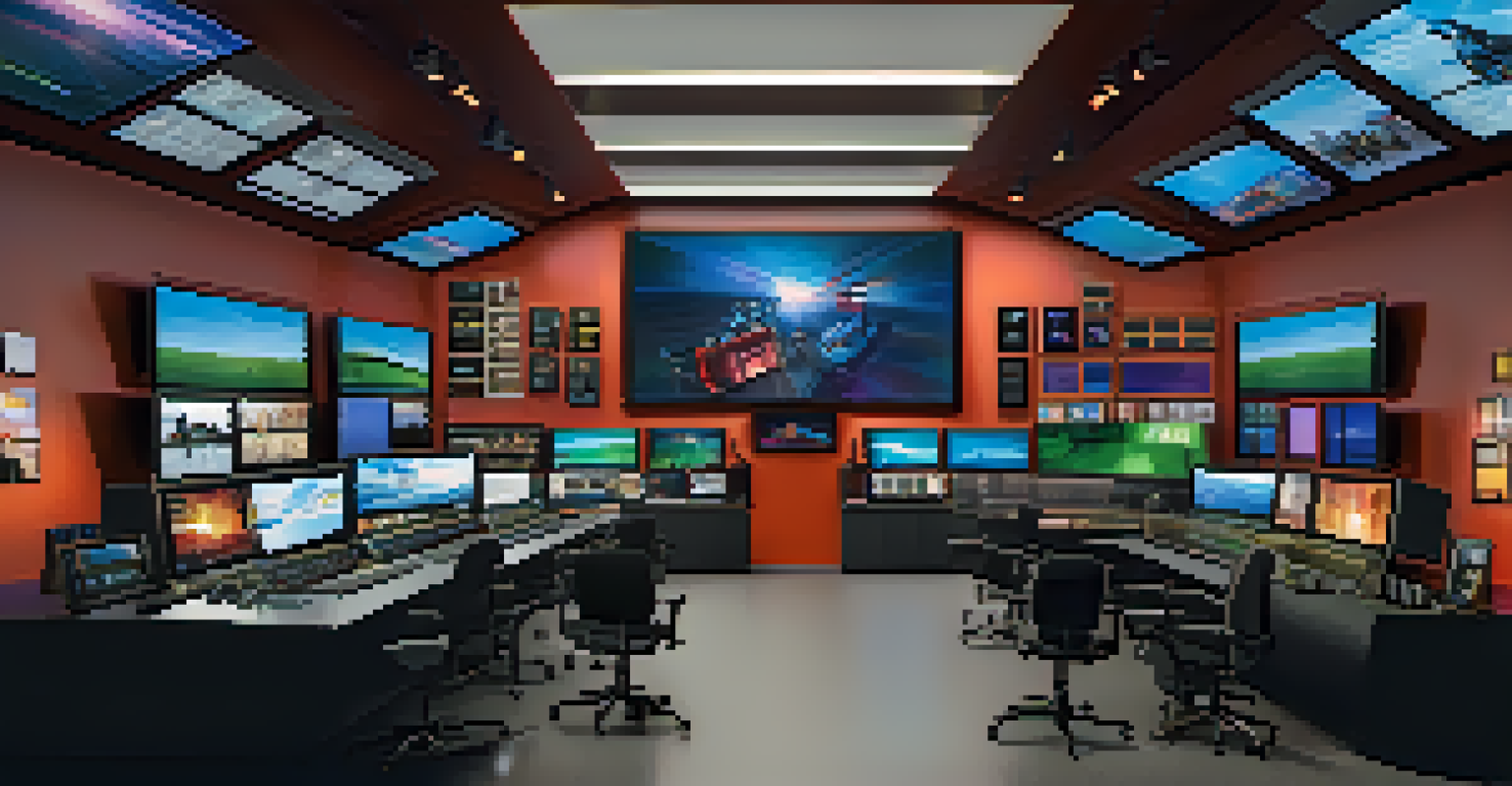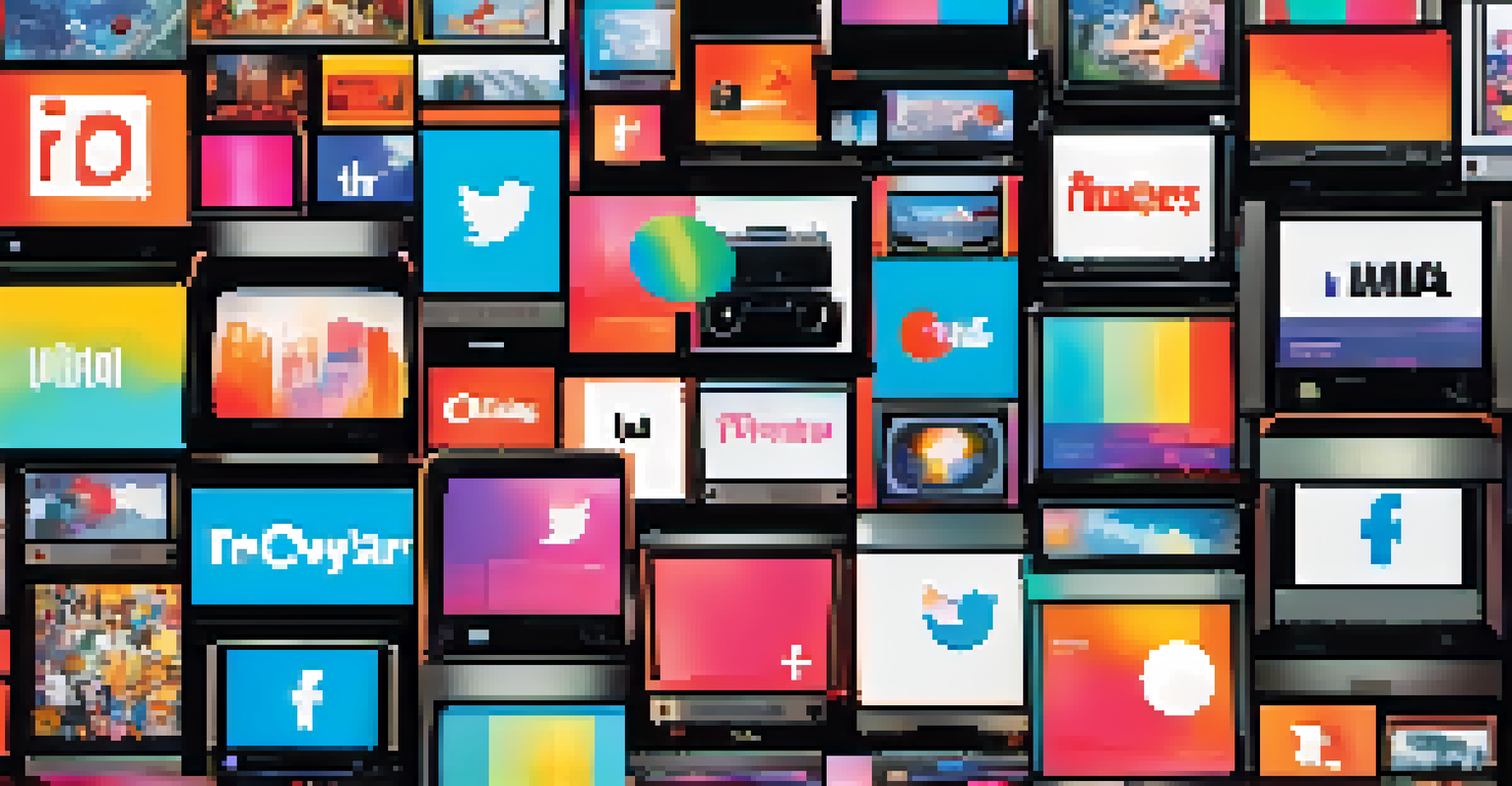The Evolution of Film Trailers: From Silent Films to Blockbusters

The Birth of Film Trailers: Silent Era Beginnings
Film trailers have come a long way since their inception in the late 19th century. During the silent film era, trailers were simple text cards displayed before the main feature, aiming to entice audiences without sound. They often included the film's title and a short description, serving as a basic marketing tool.
A trailer is a little movie that sells a movie.
As cinema evolved, so did the need for more engaging promotional content. By the 1920s, studios began experimenting with short film clips, creating a dynamic way to showcase upcoming releases. This shift marked the start of trailers as we recognize them today, blending visuals and text to capture audience interest.
Despite their rudimentary nature, these early trailers laid the groundwork for what would become a vital part of film marketing. They set the stage for future innovations, highlighting the importance of creating buzz around a film even before its premiere.
The Golden Age of Hollywood: Trailers Take Shape
The 1930s to 1950s was a transformative period for film trailers as Hollywood's Golden Age flourished. Studios began to recognize the potential of trailers as a powerful marketing tool, leading to more polished and creative productions. The use of voiceover narration became common, adding a new layer of engagement for audiences.

Trailers during this time often featured dramatic music and key scenes, building anticipation for the film's release. Iconic films such as 'Gone with the Wind' and 'Casablanca' showcased trailers that not only highlighted the stars but also hinted at the emotional journey of the story.
Trailers Evolve from Silent Beginnings
Film trailers started as simple text cards in the silent era, evolving into engaging promotional tools that blend visuals and sound.
This era established a standard for trailers that emphasized storytelling, drawing viewers in with compelling narratives. As a result, trailers became a significant aspect of the movie-going experience, influencing how audiences decided what to watch.
The Rise of Television: New Formats for Trailers
The advent of television in the 1950s introduced a new platform for film trailers, expanding their reach beyond theaters. Studios began airing trailers on TV, allowing them to target a wider audience and generate buzz for upcoming releases from the comfort of home. This shift changed how trailers were produced, making them shorter and more impactful.
The best trailers are often the ones that reveal the least.
With the rise of cable networks in the 1980s, movie trailers became a regular feature on channels dedicated to entertainment. Shows like 'Entertainment Tonight' would showcase trailers, often accompanied by interviews or behind-the-scenes footage, further engaging viewers and providing context for upcoming films.
This era marked a significant evolution in trailer marketing, as studios adapted to the changing media landscape. The increased visibility on television helped solidify the importance of trailers in the overall film promotion strategy.
The Digital Age: Trailers Go Online
The rise of the internet in the late 1990s and early 2000s revolutionized film trailers yet again. With platforms like YouTube emerging, studios gained a new avenue to reach audiences directly, allowing trailers to go viral and create immediate buzz. This shift meant that trailers no longer had to rely solely on theaters or television for exposure.
Online trailers could be shared and discussed across social media, amplifying their reach exponentially. This newfound accessibility also allowed for innovative marketing strategies, such as teaser trailers released months in advance, leaving audiences eager for more information.
Television Expands Trailer Reach
The rise of television in the 1950s transformed trailers into impactful marketing tools, allowing studios to reach wider audiences from home.
As a result, the digital age has changed the way audiences consume trailers, leading to a more interactive and communal experience. Trailers have become a topic of discussion, with fans analyzing every frame and sound, further blurring the lines between marketing and fandom.
Modern Trailers: Crafting the Ultimate Tease
Today's trailers are a masterclass in marketing, combining high-quality visuals, sound design, and well-crafted narratives. Filmmakers and studios invest significant resources into creating trailers that not only entice viewers but also reflect the film's tone and style. This careful curation makes trailers an art form in their own right.
Modern trailers often employ various techniques, such as quick cuts, dramatic music, and voiceovers to create a sense of urgency and excitement. The rise of teaser trailers—short snippets released before the full trailer—has also become a popular strategy to generate intrigue and keep audiences guessing.
Moreover, the integration of digital analytics allows studios to tailor trailers based on viewer preferences and behavior, ensuring maximum impact. This level of personalization has made trailers more effective than ever, cementing their role as a crucial aspect of a film's promotional strategy.
The Impact of Trailers on Audience Expectations
Film trailers have a profound impact on audience expectations, shaping how viewers perceive a movie even before its release. A well-crafted trailer can create excitement and anticipation, setting the stage for a successful box office opening. Conversely, a poorly executed trailer can lead to skepticism and disappointment.
Trailers often highlight key themes, character arcs, and emotional beats, giving audiences a glimpse of what to expect. This preview can be a double-edged sword; while it builds excitement, it can also lead to overhyped expectations that the final product may struggle to meet.
The Digital Age Redefines Trailers
With the internet's rise, trailers became shareable online content, creating a more interactive experience and amplifying audience engagement.
As such, trailers play a vital role in establishing the film's identity and influencing audience perceptions. Understanding this dynamic is crucial for filmmakers and marketers alike, as they strive to strike the perfect balance between intrigue and authenticity.
The Future of Film Trailers: Innovations Ahead
Looking ahead, the future of film trailers appears bright with innovations on the horizon. As technology continues to evolve, we may see even more interactive and immersive trailer experiences that engage viewers in new ways. Virtual reality and augmented reality could usher in a new era of trailers, allowing audiences to experience snippets of films like never before.
Additionally, artificial intelligence could play a role in crafting personalized trailers tailored to individual viewer preferences. Imagine a trailer that adapts its content based on your previous viewing habits, ensuring that it resonates with you on a deeper level.

As we move forward, the evolution of film trailers will undoubtedly reflect broader trends in entertainment and technology. One thing is certain: trailers will continue to be a vital part of the movie experience, captivating audiences and setting the stage for cinematic adventures.